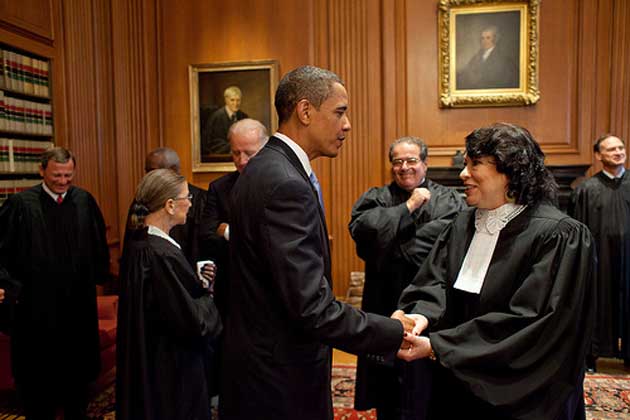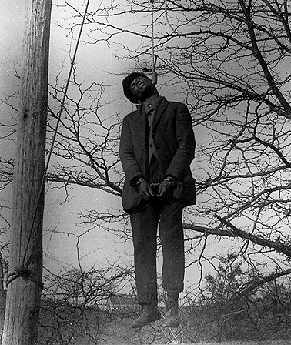Lessons of the Fourteenth Amendment - Heller, McDonald and Halbrook
Part 3
 Return to Part 2
Return to Part 2
Turning our attention to the District of Columbia V. Heller, we find even more striking ironies of modern day gun bans versus the liberties fought for during the Civil War and Reconstruction. (Note: Heller, the named party in this Case, is white, but the District is predominantly black and the background of the Case remains consistent with the points that follow.) From Halbrook’s work again we find that on January 12, 1866 . . .
". . .the House continues consideration of H.R. 1, a bill to allow black suffrage in the District of Columbia. Chandler quoted from a speech by Michael Hahn of Louisiana to the National Equal Suffrage Association, in which Hahn stated:
It is necessary . . . to see that slavery throughout the land is effectually abolished, and that the freedmen are protected in their freedom.
'The right of the people to keep and bear arms’ must be so understood as not to exclude the colored man from the ‘people.' (47)
Proponents thus saw both suffrage and the right to keep and bear arms as related rights of citizenship."
(Halbrook, page 6)
Several Citizen Militias were common in Washington, D.C. in the 1860’s. Two independent black militias drilled publicly in the District around this time as a show of independence and good citizenship. The militias were supported by the media (such as Washington’s Daily Chronicle) which recognized that these militias were essential to gaining freedom and may one day be needed again to preserve peace. The militias were also publicly supported by Washington, D. C.’s Mayor Wallach. Nevertheless, in November 1867 Johnson ordered the disbandment of all militias within Washington, D. C. This action came just prior to the
impeachment trial of President Johnson
.
Nearly 150 years ago, the Civil War fought and Constitutional Amendments passed to ensure equal protection and equal freedom for blacks – including the innate right of self defense. Black militias were common in Washington, D. C. while at the same time, southern state and local governments used a hodgepodge of laws to disarm the freedmen and KKK murders of the recently disarmed rolled through the south states. The concepts of self reliance, the right of self defense were commonly held by both blacks and whites in our society.
|
|
|
 Today, urban blacks are again fighting government lead racism for the right of self defense. It appears that modern day black leaders have forgotten their own history and the connection between being disarmed and being a slave. Our first black president, Barrack Obama, supports anti-gun policies and is actively populating the Supreme Court with Judges that appear to be anti Second and Fourteenth Amendment. The National Rifle Association (NRA) aided in the defense of both McDonald and Heller, while the National Association for the Advancement of Colored People (NAACP) remains openly anti-gun.
Today, urban blacks are again fighting government lead racism for the right of self defense. It appears that modern day black leaders have forgotten their own history and the connection between being disarmed and being a slave. Our first black president, Barrack Obama, supports anti-gun policies and is actively populating the Supreme Court with Judges that appear to be anti Second and Fourteenth Amendment. The National Rifle Association (NRA) aided in the defense of both McDonald and Heller, while the National Association for the Advancement of Colored People (NAACP) remains openly anti-gun.
 As a personal note, I remain stunned at the lack of black American’s support for defending gun rights. Where is the outcry from the black community? Why are no black leaders condemning this hypocrisy and demanding to be treated as equal citizens? Where are the history professors lecturing about what happened the last time black Americans were systematically disarmed? Where is the comparison of these modern politicians to the racist plantation owners in 1866 targeting black Americans?
As a personal note, I remain stunned at the lack of black American’s support for defending gun rights. Where is the outcry from the black community? Why are no black leaders condemning this hypocrisy and demanding to be treated as equal citizens? Where are the history professors lecturing about what happened the last time black Americans were systematically disarmed? Where is the comparison of these modern politicians to the racist plantation owners in 1866 targeting black Americans?
Footnotes: Halbrook, Stephen P.
Freedmen, the Fourteenth Amendment, and the Right to Bear Arms, 1866-1867,
Praeger, 1998 (ISBN 0-275-06331-4)
Page 2, note 7 – Free at last: A documentary History of Slavery, Freedom, and the Civil War, pg 522, (I. Berlin et al. eds. 1992)
Page 23, note 185 – Report of the Joint Committee on Reconstruction, H.R. Rep. No. 30, 39th Cong., 1st Sess., pt. 2 at pg 219 (1866)
Page viii, note 8 - S. Levinson, The Embarrassing Second Amendment, 99 Yale L.J. 637 (1989)
Page viii, note 9 – See for example, Unites States v. Warin, 530 F.2d 103 (6th Cir.),
cert. denied
, 426 U.S. 948 (1976); Burton v. Sills, 53 N.J. 86, 248 A.2d 521 (1967),
appeal dismissed
, 394 U.S. 812 (1969). However, no court has cited historical authority that actually supports this theory. See S. Halbrook,
That Every man Be Armed; The Evolution of a Constitutional Right
187-92 (1994); N. Lund,
The Second Amendment, Political Liberty, and the Right of Self-Preservation,
39 Alabama Law Review 103 (1987) (Concluding that “states’ rights” theory of Second Amendment is “essentially baseless”.)
Page viii, note 10 – For example, William van Alstyne,
The Second Amendment and the Personal Right to Arms
, 43 Duke Law Journal, 1236 (1994); S. Levinson,
The Embarrassing Second Amendment
, 99 Yale Law Review 637 (1989); A. Amar,
The Bill of Rights as a Constitution
, 100 Yale Law Review 1131, 1162-73 (1991); E. Scarry,
War and the Social Contract: Nuclear Policy, Distribution, and the Right to Bear Arms
, 139 U or PA. L. Rev. 1257 (1991). The individual rights interpretation of the Second Amendment has been characterized as the “standard model.” G.H. Reynolds,
A Critical Guide to the Second Amendment
, 62 Tenn. L. Rev. 461 (1995). For the most detailed accounts of the intent of the framers of the Second Amendment, see S. Halbrook,
Encroachments of the Crown on the Liberty of the Subject: Pre-Revolutionary Origins of the Second Amendment
, 15 Univ. of Dayton. L. Rev. 91 (fall 1989) and S. Halbrook,
The Right of the People of the Power of the State: Bearing Arms, Arming Militias, and The Second Amendment
, 26 Valparaiso Univ. L. Rev. 131 (Fall 1991). On the English common-law background, see J. Malcom,
To Keep and Bear Arms
(Harvard Univ. Press 1994).
Page viii, note 11 – For example, The Federalist No. 46 (James Madison) (contrasting the American people, who retained “the advantage of being armed”, which they “possess over the people of almost every other nation,” with European governments, which were “afraid to trust the people with arms”) in the Federalist Papers (Arlington House ed. n. d.)
Page viii, note 12 – Ten days after the Bill of Rights was proposed in the House of Representatives, Tench Coxe, a prominent Federalist and colleague of James Madison, published his “Remarks on the First Part of the Amendments to the Federal Constitution,”
Federal Gazette
, June 18, 1792, at 2, col. 1 which explained what became the Second Amendment as follow, “As civil rulers, not having their duty to the people duly before them, may attempt to tyrannize, and as the military forces which must be occasionally raised to defend our country, might pervert their power to the injury of their fellow citizens, the people are confirmed by the next article in their right to keep and bear their private arms.”
Page 6, note 47 - Cong. Globe, 39th Congress, 1st Sess. 217 (Jan. 12, 1866)
|


 Today, urban blacks are again fighting government lead racism for the right of self defense. It appears that modern day black leaders have forgotten their own history and the connection between being disarmed and being a slave. Our first black president, Barrack Obama, supports anti-gun policies and is actively populating the Supreme Court with Judges that appear to be anti Second and Fourteenth Amendment. The National Rifle Association (NRA) aided in the defense of both McDonald and Heller, while the National Association for the Advancement of Colored People (NAACP) remains openly anti-gun.
Today, urban blacks are again fighting government lead racism for the right of self defense. It appears that modern day black leaders have forgotten their own history and the connection between being disarmed and being a slave. Our first black president, Barrack Obama, supports anti-gun policies and is actively populating the Supreme Court with Judges that appear to be anti Second and Fourteenth Amendment. The National Rifle Association (NRA) aided in the defense of both McDonald and Heller, while the National Association for the Advancement of Colored People (NAACP) remains openly anti-gun.
 As a personal note, I remain stunned at the lack of black American’s support for defending gun rights. Where is the outcry from the black community? Why are no black leaders condemning this hypocrisy and demanding to be treated as equal citizens? Where are the history professors lecturing about what happened the last time black Americans were systematically disarmed? Where is the comparison of these modern politicians to the racist plantation owners in 1866 targeting black Americans?
As a personal note, I remain stunned at the lack of black American’s support for defending gun rights. Where is the outcry from the black community? Why are no black leaders condemning this hypocrisy and demanding to be treated as equal citizens? Where are the history professors lecturing about what happened the last time black Americans were systematically disarmed? Where is the comparison of these modern politicians to the racist plantation owners in 1866 targeting black Americans?
